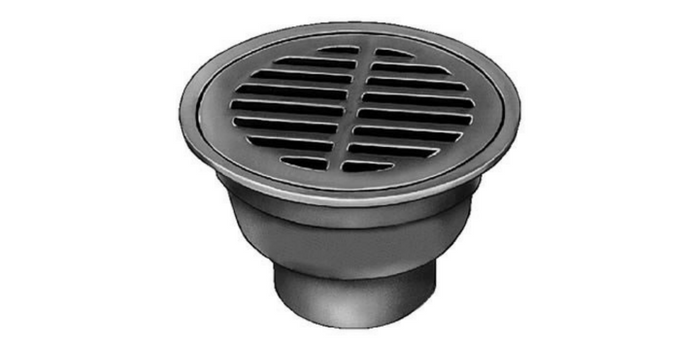Walk Deck Drainage

It may surprise you to know that walk decks are incredibly simple. The walk deck drainage system may be constructed to have a conditioned space beneath. Walk decks are quite similar to the normal roofing of a house albeit the fact that they are built to withstand human weight. The drainage system of a walk deck may get messed up once in a while perhaps because of failure to follow all the roofing rules required in the process of construction. A roof can be unvented or vented. Often you will not find a vented walk deck.
Under-Deck Walk Deck Drainage
Conditioned walk deck drainage systems have become quite popular in recent times. This drainage design is such that it captures water and diverts it into the gutter built on the exterior band joist of deck beam. This leaves the region beneath the walk deck dry and usable for storage or outdoor living. Most walk deck constructors have no idea that conditioned drainage is an alternative available for walk deck drainage. Once suggested to customers most of them ask to include it in their project. Having diligently constructed walk deck drainage especially in a rainy neighborhood makes it possible for homeowners to use the patio without worry of getting rained on.
Even though walk deck constructors apply pond liners to customize their own walk deck drainage designs, a good number of them install drainage products that are already manufactured. The two primary walk deck drainage categories are differentiate depending on where they are installed. They could be above the joist or below it. A detailed explanation of the main characteristics of the two walk deck drainage systems is discussed below.
Walk Deck Drainage system installed above Joists
This type of drainage entails some rubber membrane that curtains downwards from above into every joist bay. The pieces of the membrane are shaped in such a way as to allow stapling onto joists top. One side of this joist bay hangs lower in order to enable drainage. The moment joists are past the beam distinct pieces are connected on either sides of beam. Each of the two pieces is slanted in order to move drainage water into a gutter on the internal section of beam.
For a deck that is already existent, the complexity dictates that the walk deck has to be dismembered in order to connect the membrane. This walk deck drainage type is mostly advantageous in that any type of ceiling finishing can be installed beneath the joists. It is an incredible option for the customers desirous of walk decks constructed from wood. This walk deck drainage is also preferred due to its ability to keep the framing dry. On average normal decks can last for between 16 and 22 years. This system of walk deck drainage will extend the life of the walk deck to between 30 and 40 years. This is especially due to the fact that the framing seldom gets wets. It is not wise, however, to assume that since these joists bays remain dry, the region beneath the deck could be considered covered. Importantly walk deck drainage systems are essentially storm draining systems and not simply a normal roofing system.
The walk deck installation price often depends on market and material used.
Walk deck drainage installed below joists
This type of drainage is made of vinyl and metal panels fitted into the bottom region of already existing joists. In many instances panels are attached onto a metal or wood carrier frame fastened onto the area below joists and connected in such a manner as to cause a slope. One product is fashioned to wrap around joists bottoms and proceeds across joist bay relatively into the mid depth of joist bay. In the case of drainage, panels will essentially slide onto the gutter connected at the beam of the deck.
These types of walk deck drainages are incredibly good for retrofits. The major advantage is that the already installed deck boards do not require removal. The cost burden is also lighter. Most customers can easily afford this option. Regardless of the walk deck drainage category, the debris which fall between deck boards requires regular cleaning, perhaps once in every year or a number of times where the deck is installed in an area with many trees dropping debris onto it. Cleaning is not often required if the area is open. Cleaning involves the use of a water spraying hose onto joist bay area. Panels installed below walk deck drainage could also be removed for the purpose of cleaning.
According to many walk deck drainage manufacturers the below joists category is quite competitive especially because most of the competing products are considered inferior. In actual sense there are quite a number of walk deck drainage variations. It is important therefore to conduct preliminary product research prior to making a product choice. Discussed are some of the walk deck drainage systems available.
For above joists
- DEK Drains
- RainEscape
For below joists
- UnderDeck
- DrySpace
- Undershield
DEK Drains
DEK Drains have variations for both below and above joists. 98% of all DEK Drains are above joists. For this walk deck drainage system some flashing strip will be installed onto ledger board and some rubber membrane attached over the joists and slanted onto the gutter which is adhered onto supporting beam. Cap strips of 4 inches are connected above membrane of every joist serving as the gaskets. Panels will be temporarily attached into position using half inch staples. They will then be permanently attached using deck boards.
RainEscape
This walk deck drainage system entails some downspouts and trough sheets and some special caulk and flashing tape. Trough sheets will get stapled on joist top and then draped in between. Water will fall between deck boards into area between the drains and troughs into downspout funnels found towards the end side of joist bay. Troughs could get cut using utility knives and attached safely using staples until these deck boards stand into position. Caulk and flashing tape are utilized in waterproofing of ledger area and the seams in between railing posts and trough sheets.
